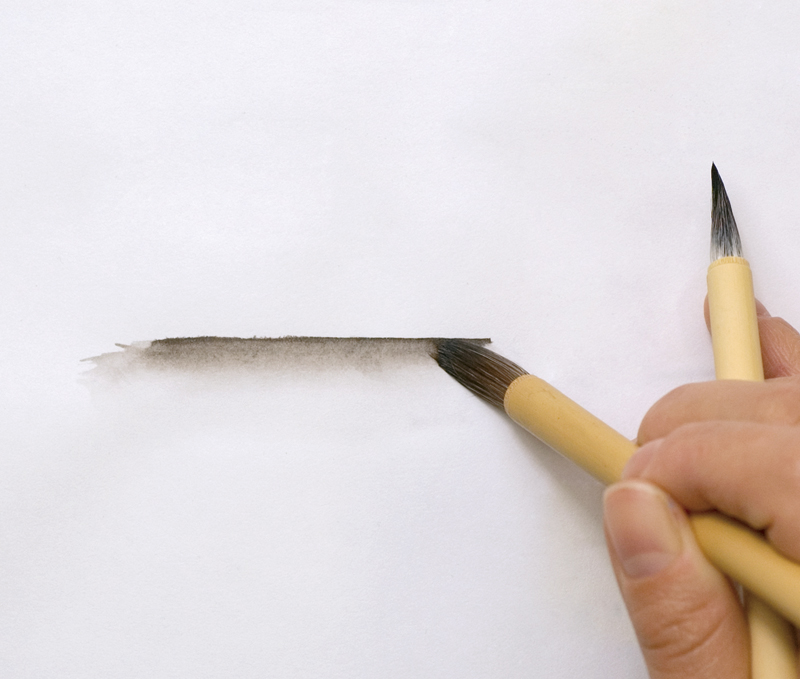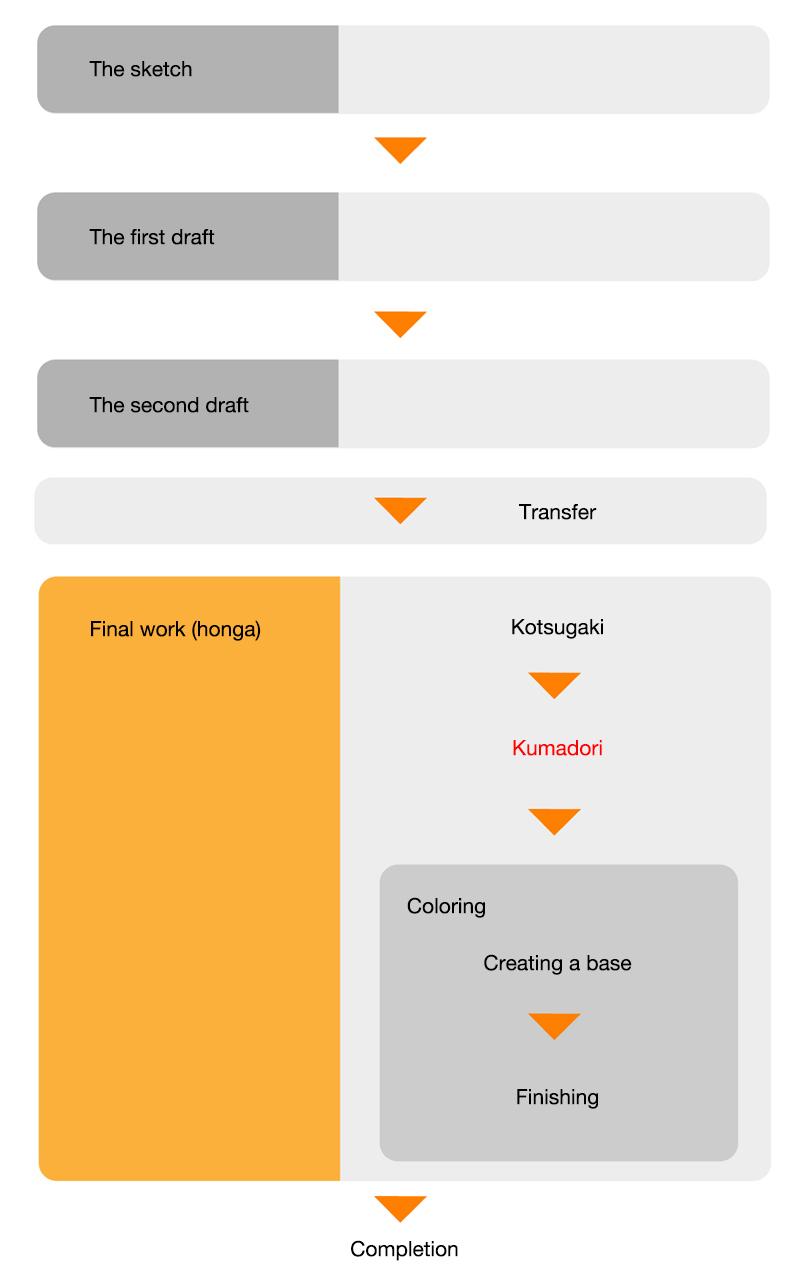Kumadori
隈取り
Kumadori
CATEGORIES
Kumadori is a representation method for blurring or adding gradations to a Japanese painting. This is also referred to as bokashi. Kumadori emphasizes the three-dimensional shape of the painted object and also has a decorative effect.
The blurred effect is created by running a moist brush over a painted surface before the paint (or the sumi ink) dries. Kumadorifude, a brush made especially for this purpose, has a wide tip and a rounded shape which allows it to hold plenty of water and blur the paint without leaving streaks. Other types of brushes, such as coloring brushes and flat brushes that have become too soft, can also be used for kumadori if they are easier to use. The technique of holding two brushes in one hand, one for painting and the other for adding kumadori, and using the two brushes alternately is called kaeshifude. There are several types of kumadori depending on where and how it is applied. These include kagekuma for expressing light and shade, terikuma in which a blurring effect is made using a color that is lighter than the base coat, and sotoguma to blur the outlines of the drawn object to make it stand out. In Japanese paintings, kumadori is done after the basic outlines are drawn. The shading, volume and texture and color tones are expressed by the varying shades of ink. Start with ink that is pale enough so as not to affect the coloring, create differences in the color tones, and when necessary, use a darker ink. However, this should be done only to the extent that will not make basic outlines disappear. The full image in black and white will offer clues for adding colors later on. Blurring effects added using colored paint are also referred to as kumadori.

- The process of creating a Japanese painting

